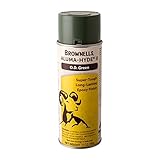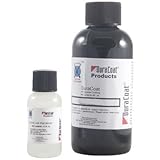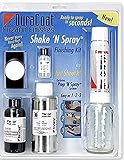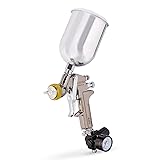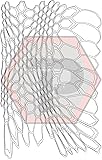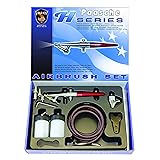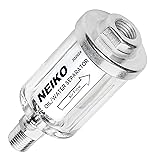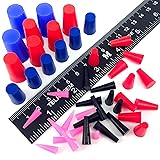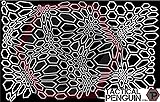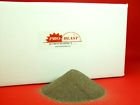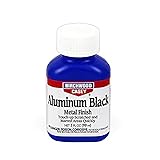To produce a finished product, manufacturers will often “wrap” their products with a protective “coat”. This “coat” will have the effect of preventing harmful agents from affecting their products.
Typical among those products are those made from easily corroded metals. And the most commonly used coatings, in this case, are paints.
In particular, powder coating paint has superior protective advantages over other types of paint. It is commonly used to protect metals such as steel, aluminum, galvanized steel, magnesium, aluminum, zinc and brass.
Powder coating technology not only helps the product resist corrosion but also improves the aesthetics of the product. Various colors along with good economic prices have helped powder coating products to be favored by many people.
Let’s learn about powder coating technologies, their advantages and applications.

Learn about powder coating
#1 What is powder coating paint?
Powder coating is a powder mixture produced by mixing several materials together, including epoxy resins, pigments and additives.
The mixture of these substances is then put through technological processing to form powder coating. This is also the raw material used for powder coating technology, operating on two basic principles, electrostatic or turbostratic, using a magnetic field generated from a high-voltage power source from 40kV ~ 100kV to create a bond between the paint powder and the object to be painted.
#2 What is the composition of powder coating powder?
Today, powder coating is strongly developed and there are many different powder coating lines. The ingredients to produce powder coating are also very diverse, giving manufacturers more options in terms of features and colors.
However, the basic components of powder coating are still: organic polymer compounds or film-forming agents (Epoxy or other resins), curatives, pigments and other additives. In particular, the composition of the film-forming agent will be changed to suit different materials, conditions or user needs. The pigment composition is also adjusted to suit the order needs.
These ingredients are put into a mixer and melted to form a paste. It is then cooled and finely ground into a powder. Because this is a dry powder that does not contain solvents, it is very environmentally friendly, has low maintenance costs, and is quite simple to preserve.
For ease of use, people classify powder coatings into 04 popular types: Gloss, Matt, Texture, Wrinkle. Divided into two conditions for indoor and outdoor use.
#3 Specifications of powder coating
Do not use solvents: Powder coating is a powder, works on the principle of static electricity without the need for solvents to dissolve. Excess paint is recovered by the suction device. Therefore, crazy powder coating completely does not pollute the environment.
The principle of static electricity helps the paint to move freely and stick evenly on the painted object. This means less need for the meticulousness of the worker, so it is easy to automate, can paint in batches without too much labor.
The method of operation is quite simple, it does not need to be highly skilled to do it.
The powdery nature of the paint also makes it very safe to store. Not subject to fire and explosion like other solvent-based paints.
The object to be painted can be repainted if the paint fails.
For steel, galvanized steel or stainless steel surfaces that do not adhere to conventional paints, powder coating will be the best choice.
With high heat resistance and low environmental impact (including hot and cold)
Able to adjust the thickness of the paint High surface coverage
Vulnerable to the environment (in cold weather, the paint surface shrinks) Difficult to adjust the thickness of the paint Low coverage (cannot paint objects with complicated edges).
#4 Is the powder coating durable?
Unlike traditional liquid paints, to use electrostatic paint, people need to use special technological equipment to paint. Specifically, the electrostatic spray gun is connected to a DC current with a high voltage of 40kV ~ 100kV.
When the paint powder passes through the spray gun device, it will be positively or negatively charged, opposite to the object to be painted. Since this is an opposite charge, the powder is attracted and retained on the object to be painted. At this time, the ionic bond will be formed. This type of bond has a very high binding energy, so they stick very well.
In addition, before using electrostatic paint, the surface of the object to be painted is usually coated with a primer to increase adhesion as well as corrosion resistance. As a result, the object to be painted (or metal) is better protected, has a higher stickiness.
Products with powder coating will be less adversely affected by external factors such as moisture, chemicals, light and some other harmful factors. In addition, the bond formed is a strong bond (ionic bond) that reduces the possibility of scratches, abrasions, fading or other problems.
#5 Compare powder coating with regular paint
The basic difference between powder coating and regular paint is that one is in powder form and the other is in liquid form. Because a large amount of solvent is required (60% by weight), the cost of input materials will depend heavily on the price of oil.
Powder coating paint is a powder derived from natural minerals, so it is relatively environmentally friendly. Therefore, electrostatic powder coating is chosen by experts as a sustainable direction in the future.
However, from the perspective of consumers, which type of paint has better quality and price is of concern. The comparisons below will help you make the best choice:
- Electrostatic paint is a mixed powder that does not require solvents, because it is very easy to melt in the air, as long as the device is mixed with the air, it can create fine mist particles to spray onto the surface with very good smoothness. As for ordinary water-based paint, the solvent content is up to 60%, so it is easy to evaporate.
- The drying temperature of powder coating makes it possible for the powder to add some bright organic colorants (metal oxide powders with a dark color) in the palette. That is, the color spectrum will be wider than normal watercolor paint colors.
- The powder-coated surface retains its original properties after a period of use. Paints are often easily affected by solvents, so it is difficult to keep their properties intact.
- Powder coating uses the principle of electric charge, the pigment is mixed with the air and sprayed into mist particles that adhere evenly to the surface. Paint is usually used with a brush or blown with a paint gun. Therefore, when compared to a gloss, impact resistance, water-resistance and abrasion, powder coating is better.
- Powder coating is considered an extremely economical paint because the excess paint is mostly recovered. In fact, the loss amount is only about 2%.
- Powder coating has better adhesion by forming an opposite ionic bond between the powder and the paint surface.
- Powder coating has the characteristics of not peeling off in patches, very good surface hardness (with strong sharp metal can create scratches).
#6 Application of powder coating
Powder-coated products are highly appreciated in many different fields such as household appliances, furniture, decoration, equipment and tools used in the medical industry, electricity construction, etc. The properties of powder coating are very durable, aesthetic and economical, so they are very popular.
In the field of construction in general, aluminum and glass in particular, powder coating technology is widely and popularly applied, especially aluminum systems used outside the building, ensuring quality and durability according to the requirements of the construction industry. time.
Powder coating is also used to protect marine hulls from seawater intrusion.
Some Powder Coating Supplies You Might Love
The principle of operation of Powder coating paint
In the early 1950s, Dr. Erwin Gemmer has begun to experiment and apply the method of coating organic, heated, powdered substances on metal surfaces. This method gives many positive results.
But it was not until 1964 that this process was perfected, put into use and commercialized. Today, this technology is gradually perfected thanks to modern equipment, and it is often referred to as “powder coating technology”.
Powder coating technology works based on two basic principles: electrostatic (Electrostatic) or electrostatic friction (Tribostatic). Charges of opposite sign attract each other, while charges of the same sign repel each other.
In order for paint powder and paint materials to be more absorbent, a high voltage source of 40kV ~ 100kV is used to charge the paint powder with a positive (+) or negative (-) charge, and the object to be painted will be charged. opposite to powder coating.
This method of charging helps charged particles (paint powder) move in a magnetic field to reach the painted surface and stick to it. Because there is a left attraction between two opposite electrodes, the paint powder has the opportunity to contact every detail of the paint material.
Power coating technology process
Different from normal paints, electrostatic powder coatings need to be painted in the spray booth equipment attached to the paint powder recovery system. Due to the vacuum force, the powder coating and air are passed through the spray gun.
Thanks to the electric field with high voltage, the powder-air mixture is ionized, charged and moves towards the surface of the object to be painted which has been grounded and adhered to it.
A collection of many paint powder particles that adhere to and distribute on the surface of the object to be painted and form a paint layer of a certain thickness. Due to the electrostatic charge, this layer of powder coating is adhered to the surface of the object to be painted and then moved to the drying oven for polymerization.
At the drying oven, the paint powder layer is provided with the right temperature to soften, continuously form a film, and chemical reactions occur, also known as curing reactions.
When the paint powder is sprayed in the spray chamber when it cannot adhere to the object to be painted, it will be dispersed in the spray chamber and then fall or be swept out by the suction gas. The recovery of paint powder helps reduce production costs.
Advantages of powder coating technology
Powder coating is a technology that not only gives us economic advantages but also meets environmental problems for the present and future because of its solvent-free nature. Therefore, the problem of environmental pollution in the air and in the water is completely absent as in water paint.
#1 Economically
- 99% of paint is used thoroughly (residual paint powder during spray painting is recovered for reuse).
- No primer required
- Easily clean areas affected by spray painting or by unsatisfactory spraying.
- Save product completion time.
#2 In terms of usage characteristics
- The painting process can be easily automated (using an automatic gun spray system).
- Easy to clean when powdered paint adheres to the operator or other equipment without using any solvents as for liqid paints.
#3 In terms of quality
- Long product life
- High gloss
- Not corroded by chemicals or affected by chemical agents or weather.
- Rich and accurate colors
#4 Metal protection
The purpose of coatings is to prevent air and moisture from contacting the metal surface to limit oxidation and electrochemical corrosion of the metal. The combination of pigments in paint layers is not only for decorative purposes but also has a protective effect on the metal.
The protective effect of the metal surface here is the inhibition of the agents present in the pigments. Substances capable of inhibiting are usually ions of metals such as zinc, Mg, Pb, Ni, Cr, Na, K, P.
Insoluble compound with corrosion products. After these pigments are dispersed with the polymer film-forming agent on the metal surface, the oxygen molecules of the air when diffusing from the outside to meet these metal ions in the pigment have been extinguished but cannot be reached with the metal surface.
How to check the quality of powder coating at home?
It is not too difficult to know the quality of powder coating at home. You can totally tell with the naked eye. Here are some telltale signs:
#1 Identify drying quality
In case of too little heat, the paint surface is very rough, the adhesion is extremely poor.
In case of a slight lack of heat, the painted surface is too glossy and has poor adhesion.
#2 Color quality
To check the color quality, you should have the manufacturer’s sample card for comparison.
#3 Adhesion
To test the adhesion of the paint layer simply, do the following:
Using a paper cutter, draw parallel lines with an aperture of 3-4mm, the next line overlaps the same parallel lines in an oblique direction of about 30 degrees to form diamond shapes.
Use a good quality masking tape to stick it on the lined area, and then peel it off. Assessment of adhesion according to the degree of peeling of the paint area just tested.
Conclusion
Powder coating technology is considered by experts as a sustainable direction in the future. Powder coating will be even more popular in our daily life. Powder coating can be seen as an advanced technology with good quality and good price.



